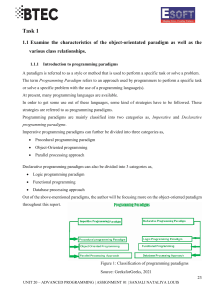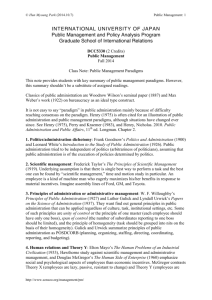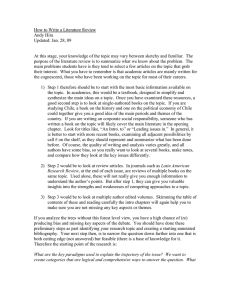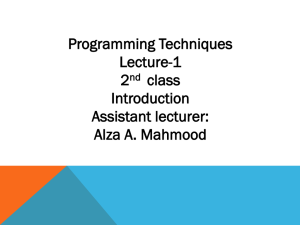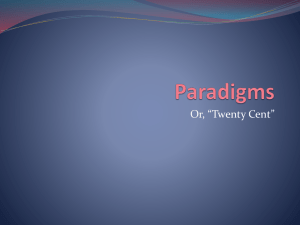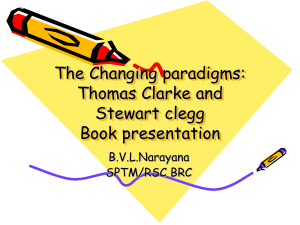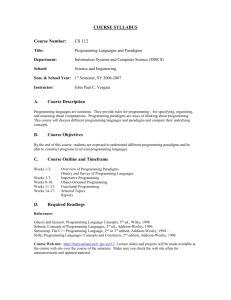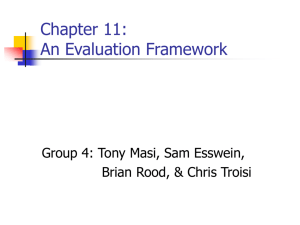Final - SEAS
advertisement
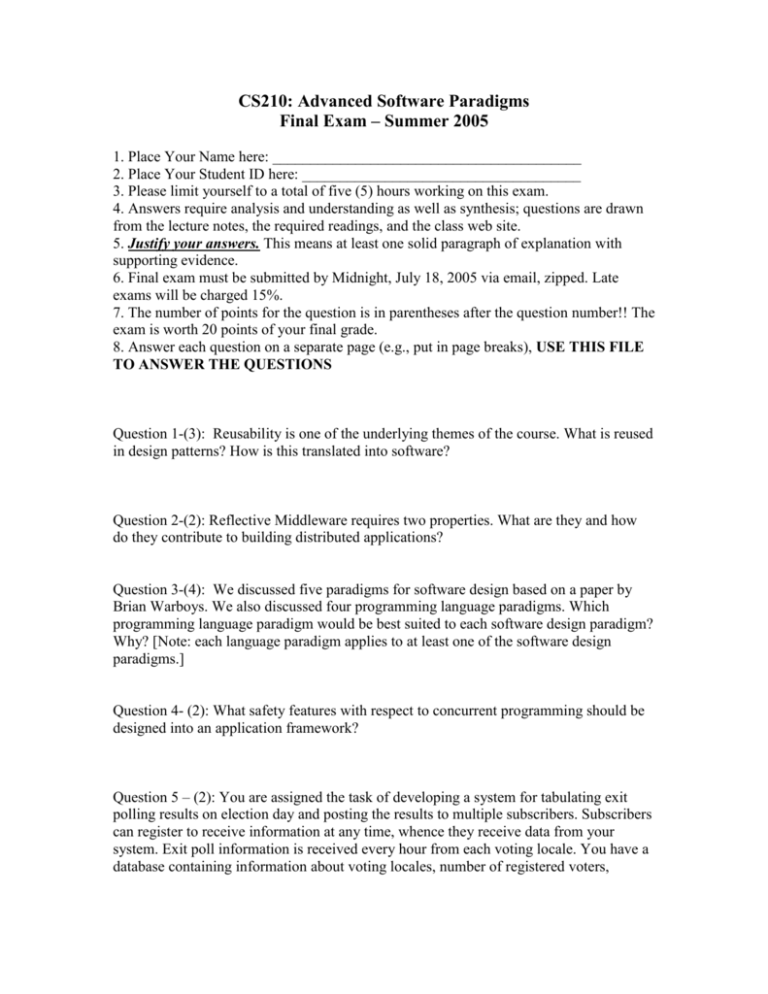
CS210: Advanced Software Paradigms Final Exam – Summer 2005 1. Place Your Name here: _________________________________________ 2. Place Your Student ID here: _____________________________________ 3. Please limit yourself to a total of five (5) hours working on this exam. 4. Answers require analysis and understanding as well as synthesis; questions are drawn from the lecture notes, the required readings, and the class web site. 5. Justify your answers. This means at least one solid paragraph of explanation with supporting evidence. 6. Final exam must be submitted by Midnight, July 18, 2005 via email, zipped. Late exams will be charged 15%. 7. The number of points for the question is in parentheses after the question number!! The exam is worth 20 points of your final grade. 8. Answer each question on a separate page (e.g., put in page breaks), USE THIS FILE TO ANSWER THE QUESTIONS Question 1-(3): Reusability is one of the underlying themes of the course. What is reused in design patterns? How is this translated into software? Question 2-(2): Reflective Middleware requires two properties. What are they and how do they contribute to building distributed applications? Question 3-(4): We discussed five paradigms for software design based on a paper by Brian Warboys. We also discussed four programming language paradigms. Which programming language paradigm would be best suited to each software design paradigm? Why? [Note: each language paradigm applies to at least one of the software design paradigms.] Question 4- (2): What safety features with respect to concurrent programming should be designed into an application framework? Question 5 – (2): You are assigned the task of developing a system for tabulating exit polling results on election day and posting the results to multiple subscribers. Subscribers can register to receive information at any time, whence they receive data from your system. Exit poll information is received every hour from each voting locale. You have a database containing information about voting locales, number of registered voters, candidates at each voting locale, etc. You perform some simple statistics on the data you receive which is distributed with the raw data that you receive. Describe the software architecture you would use to implement this system and why you chose this architecture. Identify the major subsystems. Suppose this system is to be expanded from the county level to the state level. How would you analyze and handle the scalability issue? Question 6: - (5) Zachman describes a rather complex model for a systems architecture. In his paper on page 463, there are ten categories of representations, that is, there are descriptions and lists (1 category) and nine other chart/diagram tools. These are in the rows labeled OWNER’S VIEW, DESIGNER’S VIEW, and BUILDER’S VIEW. For each of these ten categories, describe how you would use information from that category to develop a framework for a large, multisystem, distributed application. Question 7: - (2) We did not discuss data structures and problems although they form an element of our software design hierarchy. How do these areas influence design patterns?


